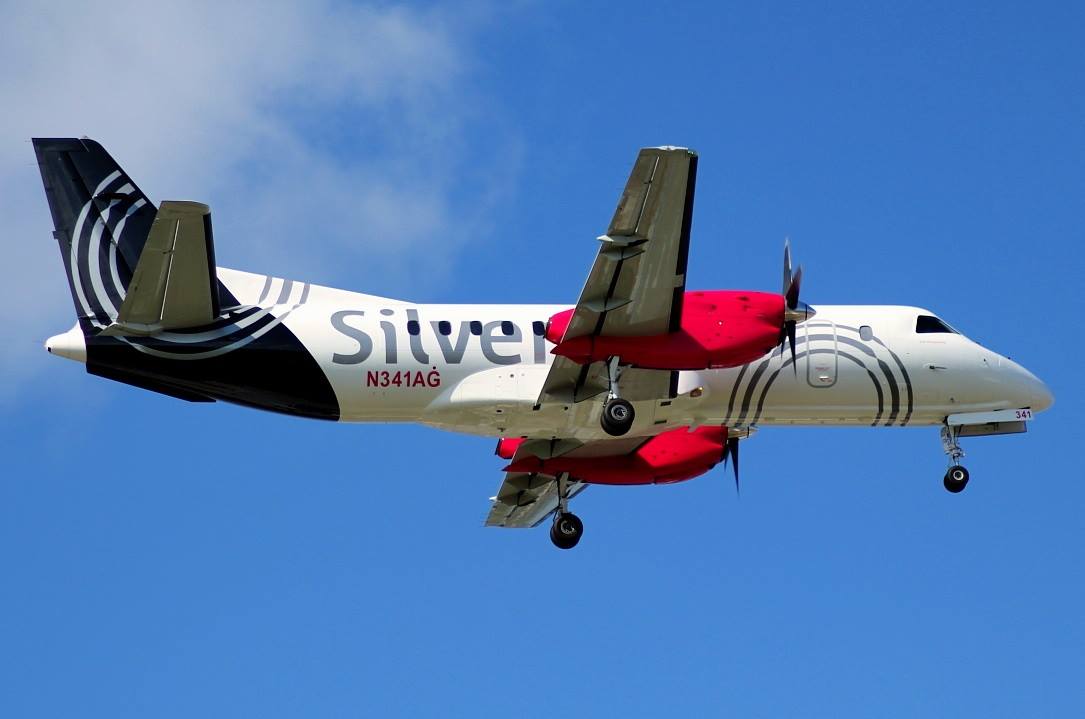How Tiny Silver Airways Plans to Win in Cuba and Beyond

Skift Take
When the U.S. Department of Transportation announced recently which airlines could fly the first scheduled flights to Cuba in more than 50 years, most of carriers selected were familiar to travelers, including American Airlines, Southwest Airlines, and JetBlue Airways.
But the biggest winner was a carrier most Americans don't know - Florida-based Silver Airways. It won the rights to serve nine destinations from Fort Lauderdale, including Camaguey, Cayo Coco, Cayo Largo Del Sur, Santa Clara, and Cienfuegos, and it plans to fly to all the cities with 34-seat Saab 340B turboprops. Like other airlines, it is still waiting to learn if it will be able to fly to Havana.
Silver, which expects to operate its first Cuba flight on Sept. 1, could be the most unique U.S. airline. In the past, it operated like most other small regional carriers. Instead of selling tickets directly to travelers, it usually flew as United Express, carrying United's passengers from smaller cities to hubs in Cleveland and Washington Dulles. Passengers might fly Silver and not even know it.
But in 2013, two years after it was bought by Chicago investment firm Victory Park Capital, Silver switched course. Despite having a small fleet of turboprops, Silver decided it would mimic larger airlines. Instead of flying on behalf of larger carriers, it launched on its own, focusing on underserved markets in the Southeastern United States, especially in Florida and the Caribbean.
Passengers may now buy tickets directly from the airline's website or through an online travel agency, and its planes say 'Silver Airways' in gray letters. Though Silver has only about about two dozen aircraft, it wants to be taken as seriously as its larger competitors.
"We are a mini-major airline," Silver CFO Jason Bewley said in an interview. "We are just like any other carrier, whether it be Spirit, Southwest or American. We fly to and from destinations, based on our own schedules and prices."
Cuba Opportunity
Before the U.S. and Cuban governments moved to open air service, Silver was an airline seeking a new niche.
It was having some success connecting Florida cities, launching routes like Tallahassee-Orlando, Tampa-Key West and Pensacola-Tampa. Those routes are intriguing because, unlike in Texas or California, where intrastate air travel is strong, major airlines operate few flights within Florida. Meanwhile, Silver expanded in the Bahamas, adding flights from Florida to several markets, including Nassau, Freeport and Treasure Cay.
But it wanted to more, and because Silver's planes can fly no more than about 600 miles, it had limited options. When Cuba opened, Silver quickly said it would make the island its focus.
"About 70 percent of all Cuban-Americans live in Florida and of that 70 percent, 80 percent of them live between West Palm [Beach] and Miami," Bewley said. "The bulk of all Cuban Americans in the United States live in our community, and they often travel there today already on charter flights already."
Silver suspects it has an advantage because compared to other airlines, it has many fewer seats to fill. For example, when JetBlue starts flying daily from Fort Lauderdale to Camaguey, Holguin and Santa Clara later this year, it plans to use 162-seat Airbus A320s. Meanwhile, when Southwest launches its own flights from Fort Lauderdale to Matanzas and Santa Clara, it plans to use 143-seat Boeing 737-700s. Both airlines will have the benefit of passengers from elsewhere making connections in Fort Lauderdale, but they will still have to sell a lot of tickets to make money.
Bewley said Silver has been surprised at how many larger airlines bid to serve smaller Cuban markets, many of which lack the infrastructure to handle many visitors. And since the U.S. government is still not permitting most tourists to visit the island, Silver is not certain there will be overwhelming demand, at least at first.
"Some carriers have applied for things that are almost guaranteed to lose money from day one," Bewley said. "We are focused on doing things that make economic sense in the current environment."
Some concerns
Even Silver has some worries. The U.S. government has not said which airlines may serve Havana, where demand is expected to be highest. Nearly every major and midsize airline has applied to serve the capital, but with only 20 daily flights permitted, many requests will be denied. Silver wants to fly to Havana from West Palm Beach, Fort Myers, Key West, and Jacksonville.
If the routes are approved, Silver is calculating its overall Cuba franchise will be profitable, as the airline plans to market itself as the best choice for Floridians visiting the island. However, if Silver is shut out of Havana, Bewley said the airline is fearful its Cuba strategy will not work as well as planned.
"To not have the crown jewel, we think weakens those secondary cities to the point that a couple may not become uneconomically to fly if we don't have Havana," Bewley said.
Without Havana, Bewley said some of the nine routes the carrier has already won many need to be cut. Silver was the only airline to apply for new flights to Cayo Coco, Cayo Largo and Manzanillo, as none of the three were "slam dunks," Bewley said.
Without Havana, Silver may not be able to fly to Cayo Coco, Cayo Largo and Manzanillo, he said.
"Our concern is that a few of these routes are a little bit questionable about what the economics will be," Bewley said.
Still, while all nine routes may not work for Silver, George Hamlin, a Virginia-based analyst, said he expects Silver will succeed in smaller Cuban markets - even if larger airlines fail. That's the benefit of having a 34-seat airplane.
"The geography of it is great and no one else is offering a product like they do," Hamlin said. "Just like everybody else, they may have some teething problems. But the good news on infrastructure is that Silver requires a whole lot less of it than any of the other carriers."
Growth Prospects
Silver will remain small for the foreseeable future, but the airline is for sale - Victory Park Capital, the Chicago investment firm, is ready to exit - and Bewley said the new owner is expected to grow the airline.
This should mean more aircraft, likely with more range and seats. Silver might seek more turboprops or even smaller regional jets. In each case, Bewley said, the airline probably would add used aircraft.
Bewley said Silver should announce a new owner by the end of the summer, and could announce its growth plans by year-end. New flights could come early in 2017.
"I would expect that we would stretch the network to deeper in the Caribbean and go further up north with new flights that could ultimately connect into our hubs in Florida," he said.
This is not an approach that has worked for many other airlines. Normally carriers are small as Silver stick with the traditional strategy of operating as United Express, American Eagle or Delta Connection.
One of the last regional airlines try to make it as stand-alone carrier was Independence Air, which lost its United Express contract and started an independent airline in 2004. The carrier, which mostly used 50-seat regional jets, folded fewer than two years later. Its fares were cheap, but it could not compete with established carriers.
Hamlin said he thinks Silver's plan might work - provided the airline continues to harness its strengths. He said it might make sense for Silver to continue adding markets in the Caribbean that are too small to handle larger aircraft. Silver would be insulated from competition from established airlines.
"Going from smaller points and providing a nonstop service strikes me as a clever idea," he said. "They have a business model that suits them. They are not another hub and spoke carrier. They are using appropriately-sized equipment."




